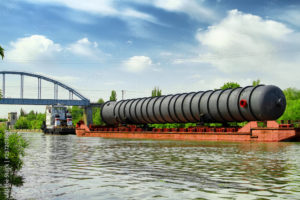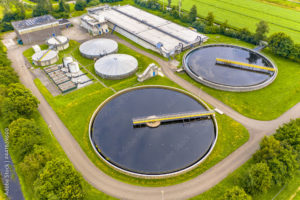Introduction
Water is one of the most precious resources on our planet, and ensuring its quality and availability is crucial for sustaining life and supporting various industries. With the increasing demand for clean and safe water, innovative solutions are required to treat and purify water effectively. One such solution is Poly Aluminum Chloride (PAC), a chemical compound that has gained significant attention in the field of water treatment. In this blog post, we will explore the properties, benefits, and applications of PAC, highlighting its role in revolutionizing water treatment efficiencies.
Understanding Poly Aluminum Chloride (PAC)
Poly Aluminum Chloride, commonly known as PAC, is an inorganic polymer coagulant widely used in water treatment processes. It is a combination of aluminium and chloride, forming a highly efficient and versatile coagulant. PAC is manufactured by reacting aluminium hydroxide with hydrochloric acid or by partial neutralization of aluminium chloride solution. The resulting product is a liquid or powder, depending on the concentration.
Properties of PAC
PAC exhibits several properties that make it an ideal choice for water treatment applications. Firstly, it possesses a high charge density, which enables the efficient removal of suspended solids, colloidal particles, and organic matter. Secondly, PAC has a broad pH range for effective coagulation, making it suitable for various water sources. Additionally, PAC is characterized by low corrosiveness and reduced impact on pH levels, minimizing the need for pH adjustment during treatment processes. These properties contribute to its versatility and effectiveness in different water treatment scenarios.
Advantages of PAC in Water Treatment
PAC offers numerous advantages over traditional coagulants, making it a preferred choice for water treatment plants and industries. Firstly, PAC is highly effective in turbidity removal and particle agglomeration. Its high charge density and larger molecular size facilitate the formation of larger flocs, enhancing the sedimentation and filtration processes. As a result, PAC can achieve superior water clarity and reduce the burden on downstream filtration systems.
Moreover, PAC demonstrates excellent performance across a wide range of water quality parameters. It is effective in both low- and high-turbidity waters and can effectively remove contaminants such as heavy metals, microorganisms, and organic pollutants. This adaptability makes PAC suitable for various water treatment applications, including municipal drinking water treatment, wastewater treatment, industrial process water treatment, and more.
Another significant advantage of PAC is its stability and extended shelf life. Compared to other coagulants, PAC is less prone to decomposition and can maintain its effectiveness over a longer period. This stability reduces the frequency of chemical dosing and improves operational efficiency.
Applications of PAC in Water Treatment
PAC finds extensive application in diverse water treatment scenarios. In municipal water treatment, PAC is used for coagulation and flocculation processes to remove suspended solids, colour, and odour from raw water sources. Its ability to remove natural organic matter (NOM) makes it particularly valuable in treating surface waters containing high levels of humic and fulvic acids.
In wastewater treatment, PAC aids in the removal of pollutants and organic compounds, including oils, greases, and heavy metals. PAC’s versatility allows it to treat various industrial wastewater, such as those generated by the textile, pulp and paper, and food and beverage industries.
Furthermore, PAC is utilized in the treatment of industrial process water, where it helps control scaling and fouling caused by dissolved impurities. By minimizing the deposition of contaminants on heat transfer surfaces, PAC improves heat transfer efficiency and reduces energy consumption.
Conclusion
Poly Aluminum Chloride (PAC) has emerged as a highly efficient and versatile coagulant in the field of water treatment. Its unique properties, including high charge density, stability, and wide pH range, make it an ideal choice for various water treatment applications. PAC’s ability to remove suspended solids, colloidal particles, and organic matter, along with its adaptability to different water qualities, sets it apart from traditional coagulants. With PAC’s superior performance, water treatment plants and industries can achieve enhanced water clarity, improved filtration, and reduced operating costs. As we continue to face water scarcity and environmental challenges, the role of PAC in revolutionizing water treatment efficiencies becomes increasingly crucial. By harnessing the potential of this chemical compound, we can ensure the availability of clean and safe water for present and future generations.








